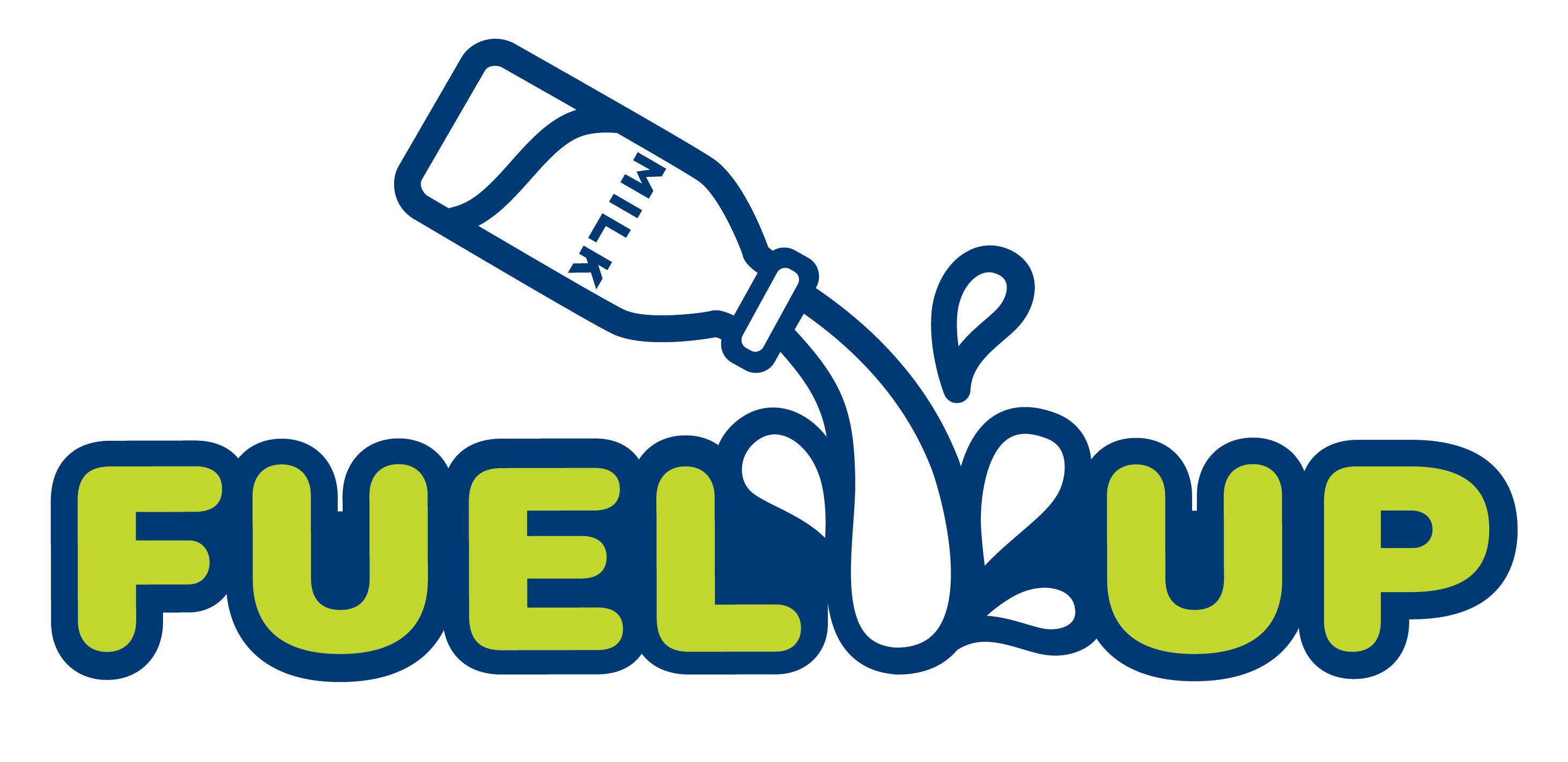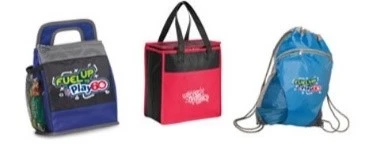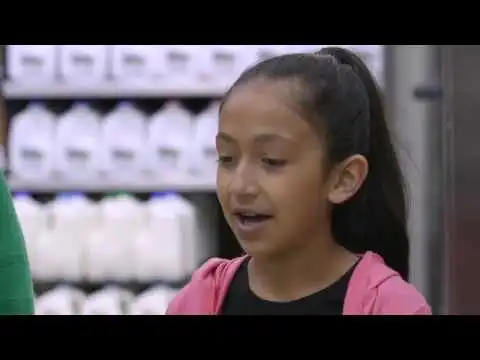OVERVIEW
What You'll Learn
What do we mean by “hunger”? Well, here in the United States, we’re talking about food insecurity. If a household is “food-insecure” it means you and your families are not always sure if they will have access to food or to enough food at various times throughout the year. Having access to nutrient-rich foods isn’t only important for students - it’s also vital for everyone in your community.
What You'll Do
In this Play, you'll select one of four ways to help ensure students have enough nutritious foods to eat. You'll involve students in a service-learning capacity and make a difference in your school's community.
Why This Play
In a 2017 Share Our Strength survey, it was reported that one in six students between the ages of 13 and 18 faces food insecurity. It can be a real challenge for students to concentrate on schoolwork when their stomachs are growling.
Credit: Share Our Strength's No Kid Hungry Campaign
In fact, nearly 22 million U.S. students receive free or reduced-priced meals daily through the National School Lunch Program, but only about half of low-income children eat school breakfast. And in the summer, when school isn’t in session, the numbers of kids eating breakfast and lunch drops even more. Fighting food insecurity can have positive impacts on low-income students, according to a research review by the Food Research & Action Center, and school meals programs have favorable impacts on food security, dietary intake and weight-related outcomes.
This means there is a big opportunity for your school to help fill these gaps.
Warm Up Activity Idea
Not quite ready for the full Play? Try this.
Organize your team and host a virtual food drive or an online milk drive. Feeding America and MilkLife provide these online tools to help people donate to reduce food insecurity.
Track your team’s progress in meeting a fundraising goal and know that you are helping people and families get the nourishment they need.
What To Do
What actions can you take to help ease food insecurity in your school or community? Read through the steps of this Play and then look at Who Can Help? and Build Interest for help in getting started.
⚠️ Note: In any Play where you plan to work with school meals or à la carte offerings, you must involve the school nutrition director and other professionals! If that’s not you, be sure to contact that team before you get started.
Step 1: Pick a program and get organized.
There are many ways to help fight hunger. In this Play, you’ll choose one of four options:
1st option: Breakfast.
- If your school is not already offering an alternative breakfast program, consider using the Breakfast for Everyone – First Meal Matters Play.
- One way to help fight food insecurity across the school community is to build a breakfast program for all students.
- USDA’s Community Eligibility Provision resources can help you do it. They can help provide breakfast AND lunch programs at no cost to students.
2nd option: Work with a local organization.
- Find a local food bank and find out how best to assist them with their food drive efforts. Organize your team and brainstorm a number of themed food drives you can run to provide nutritious foods for your community.
3rd option: Start a backpack program.
- Build on your food drive(s) and use the Feeding America Backpack Program as a resource to consider supplying food for students in your school after school and on weekends.
4th option: Work on a summer meals program.
- Find out where the nearest summer feeding site is for your area. Enlist volunteers to help at the sites and/or to consider having your school sponsor a site.
Step 2: Implement your Play.
Work with a local organization: Connect with your local food bank to find out how you can work with them to organize food drives and get the donated items to them.
- Determine how many food drives your school can have. Perhaps it’s one per semester, ones that are holiday-related or ones that tie into other themes. Set aggressive, but realistic goals.
- Consider using social media to spread the word that you are hosting a local community food drive.
- Milk is one of the least donated but most often desired foods. So, don’t forget the milk! Encourage milk donations directly to your local food pantry. And, The Great American Milk Drive takes online donations and turns them into vouchers families can use to purchase milk.
- Think MyPlate for food donations you request. Have students keep track of what foods are missing from MyPlate food groups in your collection of donations and alert the community to increase those donations.
- You might also try a Pints to Gallons fundraiser that other schools have done with great success. Read some stories about how to do it here.
- Give the food bank this set of recipe cards to print out and offer to their clients.
Start a backpack program: Use the Feeding America Backpack Program as a model.
- Work with your school’s nutrition professionals to identify food donation needs — foods that are nutritious and easy to divide into the right portions to send home. Be sure to ask for advice about food safety and appropriate items to accept.
- Identify a coordinator to set up a collection day at your school.
- Set up a school webpage or Facebook page highlighting the program. Remember to be specific about the food donations you are seeking and let people know where to drop them off.
- Get volunteers to pack and distribute the backpacks. Consider having a pick-up location where students can come to get them.
Work on a summer meals program: Learn about your local summer feeding programs and organize a team to help keep your local community nourished even when school is out.
- No Kid Hungry has best practices that can help.
- Hold “blitz events” where volunteers canvass neighborhoods or send postcards with information on summer meal sites.
- If you don’t have a local site, organize carpools for students to attend sites that are farther away.
- If existing sites are too far, consider organizing a volunteer team to provide transportation and/or apply to have your school, local recreation center or park become a feeding site. Learn more about what’s involved here.
- ⚠️ Note: Fuel Up to Play 60 does not provide funding for pantry foods. That would be done via volunteer efforts and food drives, or through other funding sources.
Step 3: Evaluate and document what you’ve done.
Organize a follow-up team to interview the participants in your programs and write up a summary you can share in your documentation. Here are some ideas for documenting in a visual way:
- Take video of your local food pantry team talking about your school’s donations.
- Interview the leaders of your backpack program to get highlights of how the program helped provide after-school and weekend meal alternatives for students.
- Create a picture montage or slide show of volunteers at the summer meals site.
- ⚠️ Note: Be very sensitive to concerns students who participate in these programs may have about having their information or images shared. You can do these activities without highlighting anyone who does not wish to be shown.
Share your documentation video or slide show and summary on your school’s website and/or share your video on social media (don’t forget to tag @fueluptoplay60 and use the hashtag #fuelgreatness).
Who Can Help?
You are not in this alone. There are many people who can help make this Play a success. For this Play, you’ll definitely need the help of your school nutrition professionals. Meet with them first to talk about the goals of the Play and what seems most “doable” in your school. Here’s a list of who can help and some specific ways they can do that.
School Nutrition Professionals
- Help coordinate individual program activities
- Make space in the school kitchen or cafeteria for supplies or donations
Principal
- Approve your plan and help with priorities
- Encourage student participation
Teachers
- Assist with setting priorities and organizing
- Encourage student participation
Students
- Assist with program activities
- Encourage peers to participate
Families
- Help get information and the word out to build awareness
- Volunteer to help with activities
Community Organizations
- Help you learn more about what’s already in place and how your school can help
- Mentor students who want to take a leadership role in Play
As with any game that’s worth playing and winning, you are bound to run into challenges. That's why getting help from others is so important. You’ll be more likely to achieve your goals when everyone works together.
Share Feeding America’s Hunger and Health: Understand Food Insecurity article with your team to brainstorm ideas to help fight food insecurity and promote health in your community.
Build Interest
Check online to find out what programs your Feeding America local food bank and Share Our Strength’s Generation No Kid Hungry are running and get ideas.
Call your local food bank to see if there is a food pantry in your area that you and your student team can get involved with to support your Play.
You can watch this video below and think about doing the warm-up activity idea in the Overview.
Community
This section features ideas on ways to involve everyone in your school and community.
Put students in the driver’s seat as much as possible. They’ll learn valuable life lessons on how to plan and implement programs, and they’ll feel great about helping your school!
For Students
- Have students meet with adults in your school who share your interest in this issue. Have the group come up with unique ideas for how to help.
- There are many ways to get students engaged in this critical cause. No Kid Hungry and the Sodexo Stop Hunger Foundation have developed a Youth Engagement Toolkit to help. Work with your project coordinator, the service learning program and the community volunteer offices in your school or community to arrange for students to earn volunteer credit for these activities. This will provide extra motivation for students to join your team.
For Everyone
- Work at designated food donation locations.
- Meet with school nutrition personnel to learn about what types of foods are appropriate donations for a backpack program.
- Identify summer feeding locations and organize students from your school to volunteer to help.
- Help with promotions of your school’s programs and the summer meals programs in your area.
Help Build the Whole Fuel Up to Play 60 Community
Explore opportunities to get families more involved in programs like Share Our Strength’s Cooking Matters in Your Community.
Homefield Advantage: Check out this resource and share it with parents and caretakers so they can see what they can do to help at home and at school.
Resources
- How to Engage Businesses
- The Great American Milk Drive
- No Kid Hungry: Youth Engagement Toolkit
- Oregon State University: Food Hero
- Share Our Strength: No Kid Hungry - What We Do
- Feeding America: Hunger In America
- USDA Food and Nutrition Service: Summer Food Service Program
- Feeding America: Mapping the Meal Gap
- Do Something.org


